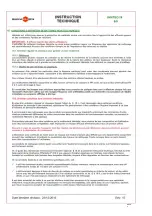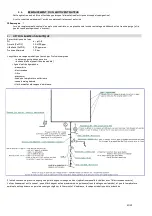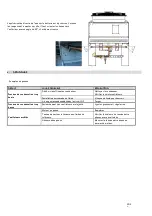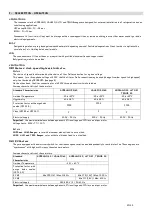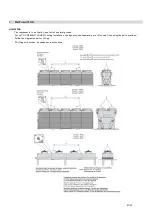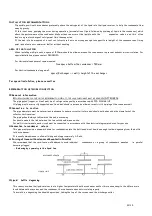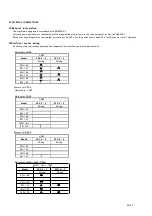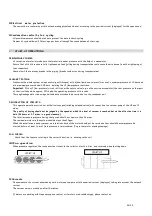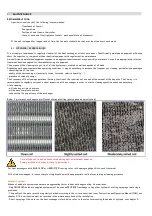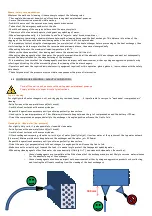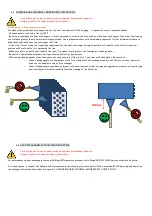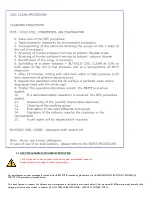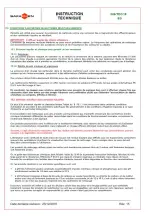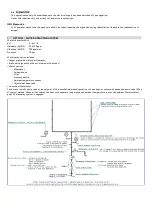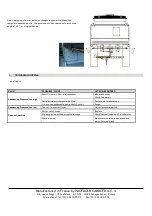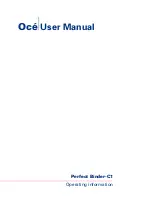
22/35
INSTALLATION RECOMMENDATIONS
If possible, position the condenser preferably above the entry point of the liquid into the liquid receiver, to help the condensate flow
away by gravity.
If this is not done, pumping can occur during operation, (accumulation of liquid followed by draining of liquid in the condenser), which
alters the performance of the condenser. Malfunctions can occur at the liquid feedto the
expansion valves and this often
leads to a greater charge of refrigerant fluid than expected.
If the unit is to be mounted of a roof, roof structure has to be strong enough to support total weight of the condenser and fixing
point indicated in our commercial leaflet without bending.
AREA OF INSTALLATION
When installing multiple units,a space of 1200mm should be allowed around the condensers to prevent exhaust air recirculation. For
special installation, please contact PROFROID.
For Horizontal condensers frame-mounted:
free space bottom the condenser > 590 mm
For Vertical condensers along a wall:
space (Exchanger <-> wall) > height of the exchanger
For special installation, please consult us.
REFRIGERATION NETWORK CONNECTION
General information
B
EFORE ANY WORK IS DONE ON THE REFRIGERATION CIRCUIT
,
THE HOLDING CHARGE MUST BE REMOVED
(NITROGEN).
The piping used (copper or steel) must be of refrigeration quality in accordance with PED 2014/68/UE
All piping must be correctly supported and fixed and should in no case be allowed to restrict the piping of the condenser unit.
Connection to suction
The pipe diameters must be determined in advance to ensure correct oil return and should not be based on the diameters of the
collector suction valves.
The piping should always fall towards the unit, never away.
For double models, the link between the two coils should made on-site.
For multi-circuit models, each circuit must be connected in accordance with the electrical diagram produced for your use.
Connection to condenser return
This pipe must provide a downward drain for condensation into the bottle and must be wide enough to allow degassing from the bottle
to the condenser.
It is usually dimensioned to allow a fluid speed of approximately 0.5 m/s.
Pairing of Several Condensers Mounted in Parallel
We recommend that the circuits are well balanced to avoid individual
condensers or a group of condensers mounted
in parallel
becoming clogged
- Balancing by symmetry in the liquid line:
DISCHARGE HEADER
LIQUID LINE
Liquid bottle degassing
This can occur when the liquid receiver is at a higher temperature than the condenser and for this reason, despite the difference in
levels between the receiver and the condenser, the condensate does not circulate properly
To avoid this, a degassing line should be provided, linking the top of the receiver and the discharge outlet.
Summary of Contents for ADAGIO 50
Page 17: ...20 3 5 ...
Page 29: ......










